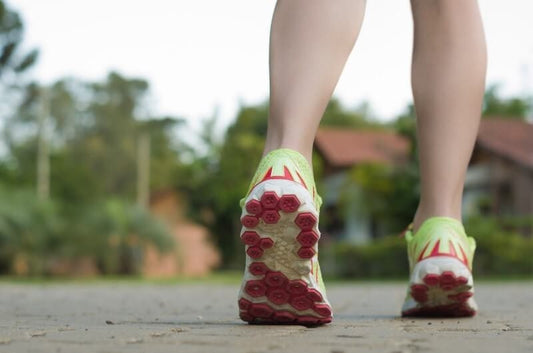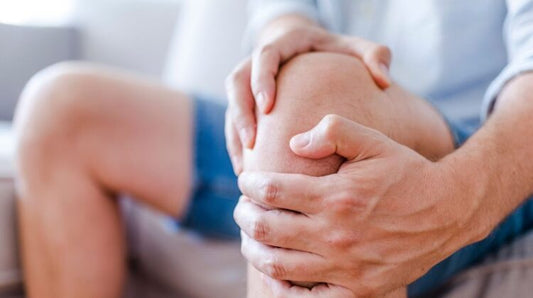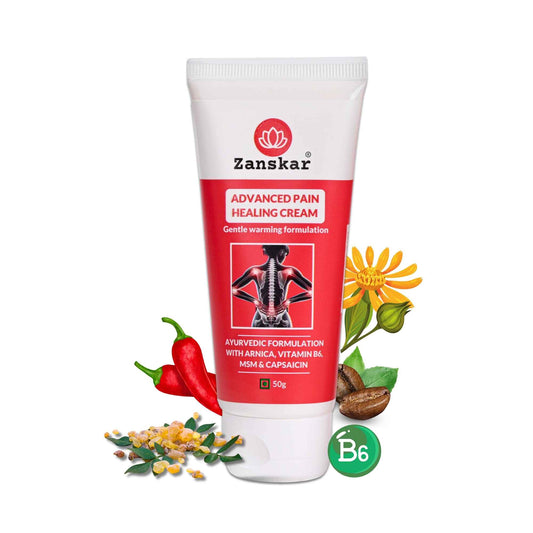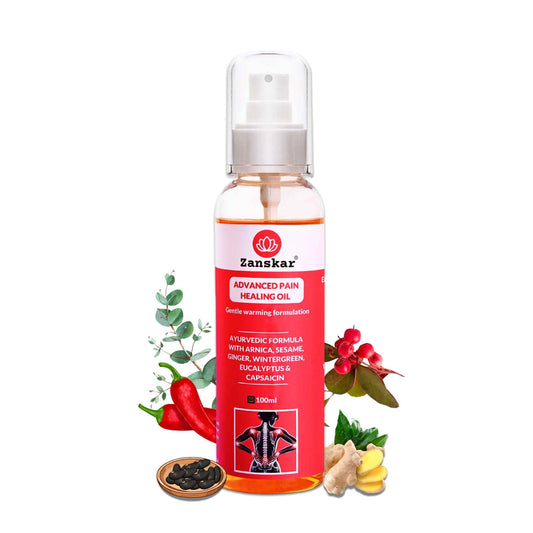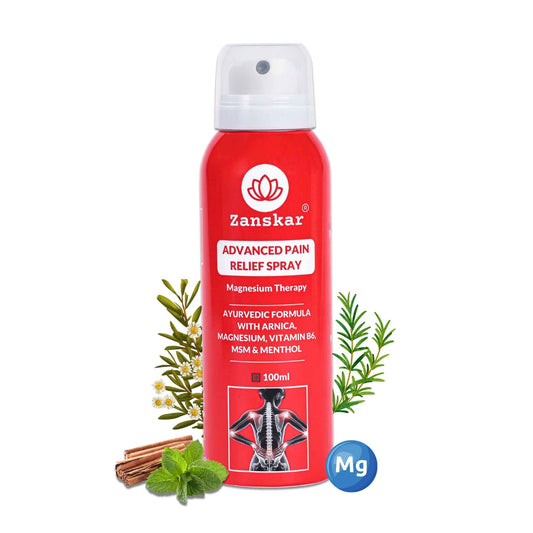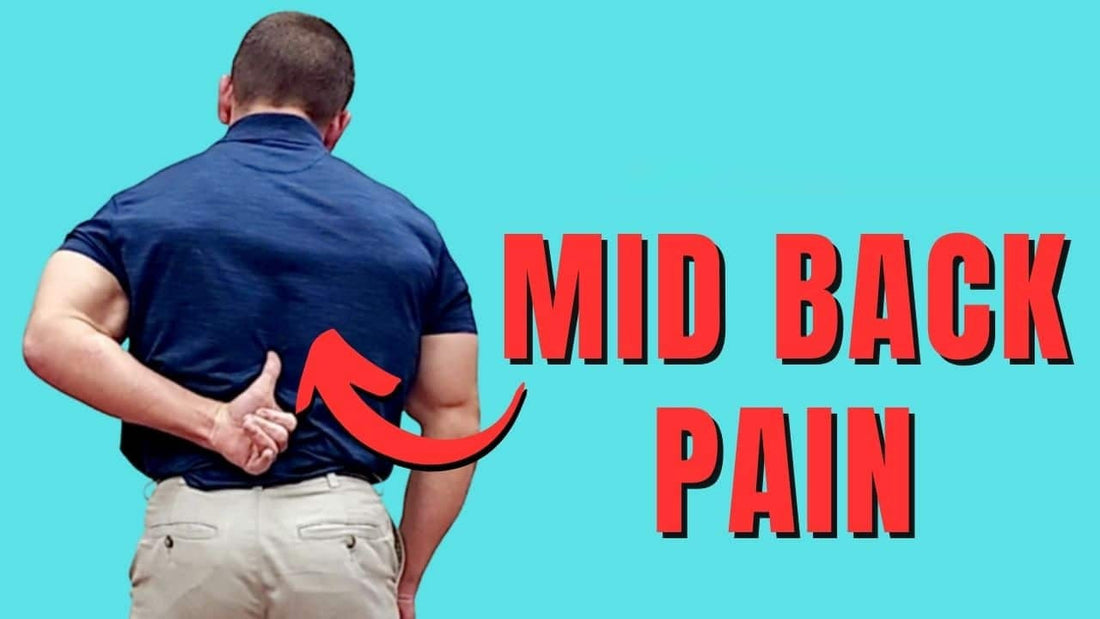
Mid back pain: causes, treatment, and exercises
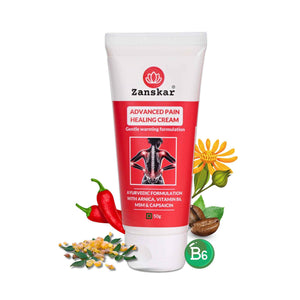
When people talk about back pain, the lower back often takes center stage. But pain isn’t limited to that area — the middle back can also be a source of discomfort. This kind of pain can arise from common issues like injury, joint pain, or changes in the spine.
The thoracic spine, located between your upper and lower back, supports many everyday movements — from washing your hair and reaching overhead to sitting or lying down with ease. When this area is affected, even simple tasks can become difficult.
“If your middle back is irritated, it can be challenging to move or bear weight through your postural muscles, especially around the shoulder blades,” says a physical therapist at Zanskar.
Read on to explore the causes of middle back pain, and discover ways to prevent and manage it — including expert-recommended exercises from Zanskar’s physical therapy team.
Sure, here’s a rephrased version with a clear, professional tone and no reference to any individual:
Causes of Middle Back Pain
Middle back pain can develop from a variety of factors. Some of the most common include:
-
Muscle Strain or Sprain
The back is built to handle lifting, but doing so while fatigued, in an awkward position, or with more weight than the body is prepared for can lead to strain — often triggering middle back pain.
-
Falls and Accidents
Losing balance or falling can impact many areas of the body. Depending on how the body lands, the back — especially the middle section — can be affected.
-
OA and Inflammatory Conditions
As the spine naturally changes with age, OA can develop, causing stiffness and pain. Inflammatory forms of joint pain, like RA or ankylosing spondylitis, can also affect the middle back.
-
Herniated Disc
When the inner part of a spinal disc pushes through its outer layer, it can irritate nearby nerves. While this is more common in the lower back, it can occur in the thoracic spine and cause pain in the mid-back region.
-
Scoliosis
A sideways curvature of the spine can lead to uneven pressure distribution, resulting in discomfort across various parts of the back, including the thoracic area.
-
Postural Stress
Holding the same posture for extended periods — whether sitting upright, slouching, or standing — can place stress on the middle back. Lack of movement or postural variety is a common contributor to stiffness and discomfort.
-
Spinal Stenosis
A narrowing of the spinal canal can compress the spinal cord or nerves, leading to pain, tingling, or weakness in the back.
-
Daily Habits and Routines
Everyday activities like prolonged sitting, repetitive bending, or simply lacking strength in the mid-back muscles can all contribute to pain and stiffness over time.
Understanding these potential causes can help in managing and preventing middle back pain more effectively.
Symptoms of middle back pain
Middle back pain can cause several uncomfortable symptoms, such as:
- Pain
- Tenderness
- Tension
- Limited mobility
- Stiffness
You may notice that these symptoms bother you more when you’re standing or sitting for a long period of time, when you’re performing reaching motions with your arms, or you’re carrying something heavy, such as a backpack or groceries.
Here’s a rephrased version of the section on treatments for middle back pain, with a clean and informative tone and no mention of individual names or external platforms:
Treatments for Middle Back Pain
In many cases, mild to moderate middle back pain can be managed effectively at home without the need for medical procedures. Depending on the underlying cause, the following strategies may help relieve discomfort:
- Exercise and Movement Therapy: Gentle, consistent movement can help ease tension and improve spinal support. Targeted exercises that stretch and strengthen the mid-back muscles are especially helpful. Working with a physical therapist — either in person or through a guided program — can ensure you’re doing the right exercises safely.
- Frequent Position Changes: Staying in one position for too long can lead to stiffness and muscle fatigue. If you have a desk-based routine, it’s helpful to stand up, stretch, or move around every 30 to 45 minutes to reset your posture and relieve built-up tension.
- Over-the-Counter Pain Relief: You may consider using Zanskar Pain relief cream or oil for deep warming relief from middle back pain
- Hot or Cold Therapy: Applying ice can help reduce swelling after a strain or injury, while heat can loosen tight muscles and improve circulation in the middle back. Choose whichever feels more effective, based on your symptoms.
- Massage Therapy: A professional massage can help release tension in the mid-back muscles and improve flexibility. This may also make it easier to engage in other exercises that support healing and mobility.
Here’s a rephrased version of the section on preventing middle back pain, with a clean and accessible tone:
Exercises for Middle Back Pain
While many different remedies can help middle back pain, our experts say movement, especially exercises that focus on stretching and strengthening, is one of the best ways to relieve — and prevent — middle back pain. Following exercise are useful for mid back pain relief:
1. Cat-cow: This is a popular mobility exercise that moves your spine through flexion and extension, which can be helpful if you’re sitting for long periods with rounded shoulders

2. Cobra Stretch: This exercise helps extend the back and open up the chest, which is good for mobility when you have middle back pain

3. Seated Trunk Rotation: The seated twist helps to promote the rotational trunk movement you need in your everyday life when you’re turning to do things, and can especially help with stiffness

How to Prevent Middle Back Pain
Middle back pain doesn’t have to disrupt your life — a few daily habits can go a long way in keeping your spine strong and pain-free.
- Adjust Your Sleeping Position: If you’re waking up with back discomfort or notice more stiffness in the morning, try sleeping on your side in a fetal position with a pillow between your knees. Sleeping on your back with proper support can also help reduce strain on the spine.
- Set Up an Ergonomic Workspace: Design your work area in a way that encourages good posture and allows you to shift positions throughout the day. Whether it’s a standing desk or a supportive chair, small adjustments can make a big difference.
- Reduce Stress: Stress can amplify how pain feels. Incorporating regular movement, deep breathing, and mindfulness practices into your day can help reduce both stress and muscle tension in the back.
- Use Safe Lifting Techniques: While lifting isn’t always the main cause of back pain, improper technique can lead to strain. Warm up before lifting, keep objects close to your body, and avoid twisting while carrying. Aim to hold items at waist level to minimize pressure on the spine.
- Build Core Strength: A strong core supports your spine and reduces strain on your back. Regularly practicing core and full-body strengthening exercises can lower your risk of middle back pain and improve posture.
- Incorporate Foam Rolling: Using a foam roller on your middle back can release tight muscles and improve mobility. It applies gentle pressure to sore areas, helping relieve tension and improve flexibility.
- Take Movement Breaks: Prolonged sitting can cause muscle fatigue and stiffness. Break up long periods of sitting with short “movement snacks” — simple stretches or walking for a few minutes — to keep your spine engaged and supported.
Making these changes consistently can help prevent middle back pain and support overall spinal health in the long term.
Key takeaways:
- Middle back pain can result from a variety of everyday factors like muscle strain, spine changes, postural habits, or injuries.
- Gentle, regular movement is one of the most helpful ways to manage and prevent middle back pain, even if moving feels a bit uncomfortable at first.
- Stretching and strengthening exercises for your middle back can help relieve pain and support long-term back health
PT tip: Try a towel
Supporting your lumbar spine, or the base of your back, can help with pain throughout the back. Our experts recommend rolling a hand towel and putting it sideways across your low back when you sit to support the natural curve of your spine. “Then, the rest of your spine will stack nicely, which can help reduce pain in your middle back and neck,” she says.

Learn More About Zanskar Health
If you have joint pain, muscle pain or headaches that makes it hard to move, Zanskar offers the most advanced full stack pain relief solutions for you.
Now available to purchase, Zanskar® pain-care range have unique bio-active formulations. It provides lasting relief from muscle and joint discomfort that you can feel good about. Get your fix before stocks run out - buy now.
You can also gain access to therapeutic exercises and stretches for your condition by downloading the Zanskar Health physiotherapy mobile app. Additionally, you’ll have a personal care team to guide, support, and tailor our program to you, including behavioral and nutritional coaching.
Download our mobile app here 👉 download and track your exercise streak.
Medical Review: This article is written and medically reviewed by Dr Nishtha Mittal (Senior Health Content Editor at Zanskar Health). This article and its contents are provided for educational and informational purposes only and do not constitute medical advice or professional services specific to you or your medical condition.


